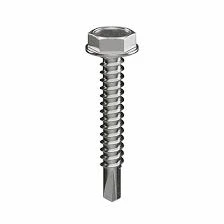Effective Use of Cross Bracing in Steel Structural Design and Stability Enhancement Techniques
Cross Bracing in Steel Structures An Overview
Cross bracing is an essential design feature in modern steel structures, used extensively in buildings, bridges, and towers. This technique involves the installation of diagonal members that connect opposing corners of a structural framework, forming an 'X' shape. Cross bracing enhances the stability and load-bearing capacity of a structure, making it a vital component in the engineering of safe and reliable edifices.
One of the primary benefits of cross bracing is its ability to resist lateral forces, such as wind and seismic loads. These forces can significantly affect the integrity of a structure, potentially leading to catastrophic failures. By redistributing these loads across the braced frame, cross bracing minimizes the risk of excessive deformation and helps maintain the overall shape and integrity of the building.
Cross Bracing in Steel Structures An Overview
There are various types of cross bracing configurations, including single diagonal, double diagonal, and chevron bracing. Each configuration has its advantages and is chosen based on the specific needs of the project. Single diagonal bracing is widely popular for its simplicity and effectiveness, while double diagonal bracing offers additional redundancy. Chevron bracing, characterized by its 'V' shapes, is often used in taller structures due to its efficient load distribution properties.
cross bracing steel structures

The material selection for cross bracing is also important in structural design. Steel is the most common material due to its strength, durability, and elasticity. Steel cross braces can be fabricated in various shapes and sizes, providing designers with the flexibility to optimize their structures for both performance and aesthetics. While steel is prevalent, it’s essential to evaluate the weight, cost, and environmental impact of different materials when designing a cross braced system.
In recent years, advancements in technology have led to the development of innovative materials and fabrication techniques, enhancing the performance of cross bracing systems. For instance, the use of high-strength steel alloys allows for lighter yet stronger bracing members, significantly reducing the overall weight of the structure without compromising safety. Additionally, the implementation of computer-aided design (CAD) software and finite element analysis (FEA) tools enables engineers to optimize the bracing system for specific load conditions, leading to more efficient designs.
Cross bracing is not only functional but also plays a role in the architectural aesthetics of a structure. Exposed cross bracing can create a rugged, industrial look that is visually appealing in contemporary architecture. This combination of form and function is often seen in urban buildings, where the structural elements become a part of the design narrative.
In conclusion, cross bracing is a critical element in the design and construction of steel structures. Its ability to increase stability, resist lateral loads, and enhance structural integrity makes it indispensable in modern engineering. With continued advancements in materials and technology, the future of cross bracing in steel structures looks promising, paving the way for safer, more resilient buildings that meet the demands of our ever-changing environment. As designers and engineers continue to push the boundaries of architectural innovation, cross bracing will undoubtedly remain a cornerstone of structural design.
-
Weatherproof Plastic Expansion Anchors for OutdoorNewsJun.06,2025
-
Sustainability in the Supply Chain: Eco-Friendly TEK Screws ProductionNewsJun.06,2025
-
Load-Bearing Capacity of External Insulation FixingsNewsJun.06,2025
-
Double Head Bolts: Enhancing Efficiency in Industrial MachineryNewsJun.06,2025
-
Corrosion Resistance in Chipboard Screws: Coatings for Wholesale DurabilityNewsJun.06,2025
-
Butterfly Toggle Bolts : Enhancing Structural ResilienceNewsJun.06,2025
